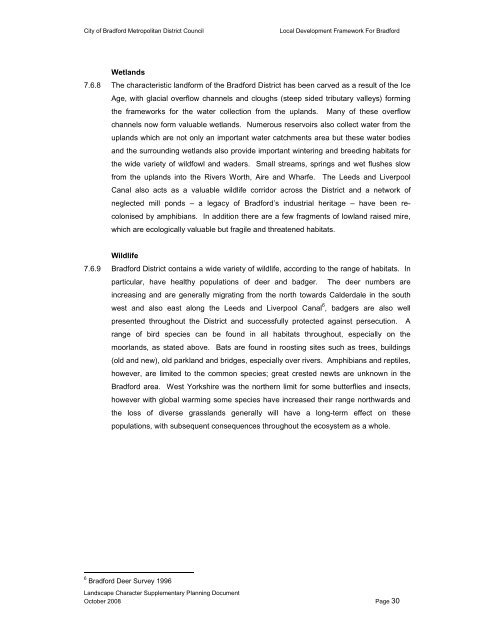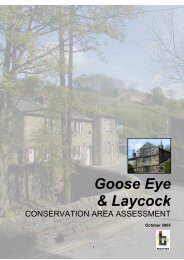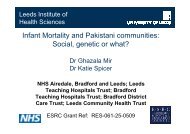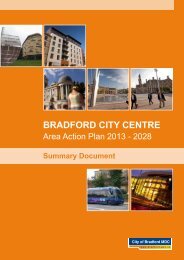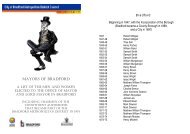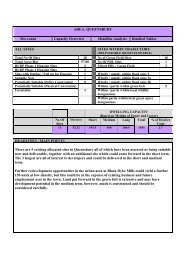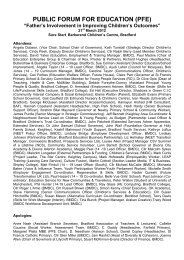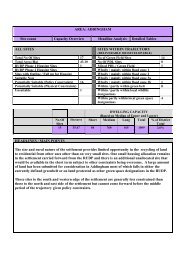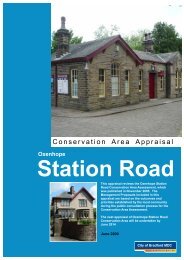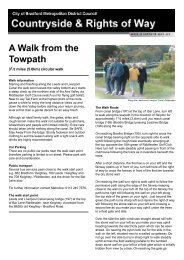Landscape Character Supplementary Planning Document ...
Landscape Character Supplementary Planning Document ...
Landscape Character Supplementary Planning Document ...
You also want an ePaper? Increase the reach of your titles
YUMPU automatically turns print PDFs into web optimized ePapers that Google loves.
City of Bradford Metropolitan District CouncilLocal Development Framework For BradfordWetlands7.6.8 The characteristic landform of the Bradford District has been carved as a result of the IceAge, with glacial overflow channels and cloughs (steep sided tributary valleys) formingthe frameworks for the water collection from the uplands. Many of these overflowchannels now form valuable wetlands. Numerous reservoirs also collect water from theuplands which are not only an important water catchments area but these water bodiesand the surrounding wetlands also provide important wintering and breeding habitats forthe wide variety of wildfowl and waders. Small streams, springs and wet flushes slowfrom the uplands into the Rivers Worth, Aire and Wharfe. The Leeds and LiverpoolCanal also acts as a valuable wildlife corridor across the District and a network ofneglected mill ponds – a legacy of Bradford’s industrial heritage – have been recolonisedby amphibians. In addition there are a few fragments of lowland raised mire,which are ecologically valuable but fragile and threatened habitats.Wildlife7.6.9 Bradford District contains a wide variety of wildlife, according to the range of habitats. Inparticular, have healthy populations of deer and badger. The deer numbers areincreasing and are generally migrating from the north towards Calderdale in the southwest and also east along the Leeds and Liverpool Canal 6 , badgers are also wellpresented throughout the District and successfully protected against persecution. Arange of bird species can be found in all habitats throughout, especially on themoorlands, as stated above. Bats are found in roosting sites such as trees, buildings(old and new), old parkland and bridges, especially over rivers. Amphibians and reptiles,however, are limited to the common species; great crested newts are unknown in theBradford area. West Yorkshire was the northern limit for some butterflies and insects,however with global warming some species have increased their range northwards andthe loss of diverse grasslands generally will have a long-term effect on thesepopulations, with subsequent consequences throughout the ecosystem as a whole.6 Bradford Deer Survey 1996<strong>Landscape</strong> <strong>Character</strong> <strong>Supplementary</strong> <strong>Planning</strong> <strong>Document</strong>October 2008 Page 30


